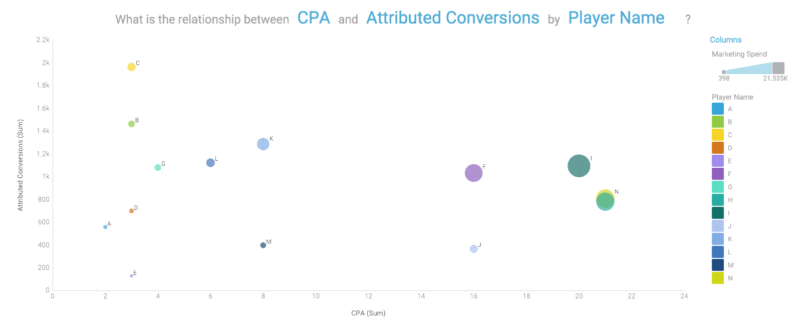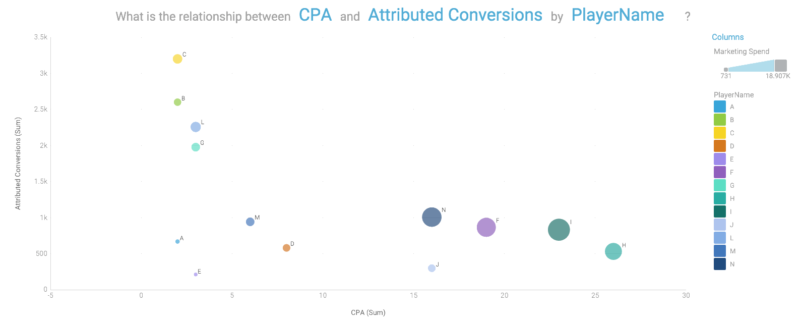How To Make Attribution Data Actionable
With so much data at your fingertips and a seemingly infinite number of things to tweak, where do you start? Columnist Eric Dezendorf shares an example that illustrates two basic principles for focusing your efforts.

Many of my clients come back to me about four weeks after they’ve completed implementations processes with the same basic question, “Now what?”
With weekly, daily or near-real-time attribution now available for marketers across all industries, the new challenge facing marketers is not how to get attribution data out of their logs, but how to make sense of it and employ it in an accurate, efficient and targeted manner.
The task isn’t quite as daunting as one might think at first. So today, I’d like to take the time to walk through a use case of how to make your new fancy daily attribution work to drive results, revenue and conversions to your business.
Always Be Granular
First, always remember that you must optimize at the most granular level you have available in your attribution software or model.
Let’s say that your attribution model has an organization level of strategy, and you’ve grouped all of your strategy campaigns into remarketing and prospecting levels. Let’s then say that your remarketing CPA over the past 28 days has been $10, and for your business, this means you should invest more!
Investing at this level, however, won’t be efficient. It’s likely that the different sites serving your remarketing ads are returning conversions at different rates. And you’re also likely spending different amounts on them. It’s even more likely that the different placements are performing differently even within the same site. So you must apply any learnings and changes at the very base level.
Make Changes Where They’ll Count Most
The second issue to come into play now is that it’s nearly impossible to balance the dozens, hundreds, or even thousands of points of granular data you have at your disposal at this base level, so it’s important to only choose a handful of placements to which to apply your optimizations.
My preferred method is to focus on optimizing only the top and bottom 20 percent of performers within two to five campaigns, depending, of course, on how many placements you have per campaign.
Now that we’ve set boundaries and guidelines, it’s time to actually make and track changes.
An Example
In the example below, I’ve tracked about 14 placements from two sites in a high-performing campaign for a given company, and I’m looking at 28 days of conversion and marketing data. I’ve compared the most recent 28-day period with the period of marketing that occurred for the same number of days two weeks before.
Here’s the original data from two weeks prior, organized by CPA:
| Player Name | CPA | Marketing Spend | Attributed Conversions |
|---|---|---|---|
| A | $2 | $1,042 | 557 |
| B | $3 | $4,169 | 1,464 |
| D | $3 | $2,105 | 699 |
| C | $3 | $5,982 | 1,963 |
| E | $3 | $398 | 128 |
| G | $4 | $4,151 | 1,080 |
| L | $6 | $6,359 | 1,122 |
| K | $8 | $10,399 | 1,286 |
| M | $8 | $3,257 | 397 |
| F | $16 | $16,223 | 1,032 |
| J | $16 | $5,912 | 365 |
| I | $20 | $21,535 | 1,095 |
| N | $21 | $16,909 | 807 |
| H | $21 | $16,602 | 780 |
From this data, we can reach a few conclusions about the effectiveness of each of our players. Even though player A has our second-lowest amount of spend, it has the best (lowest) CPA. We also see that our three players with the most spend are towards the bottom in terms of CPA.
The marketer, if only looking at this set of data, would probably increase spend proportionately to the top seven players while removing spend from the bottom seven.
Two weeks later, here’s where the business ended up:
| PlayerName | CPA | Marketing Spend | Attributed Conversions |
|---|---|---|---|
| A | $2 | $1,393 | 668 |
| B | $2 | $4,497 | 2,601 |
| C | $2 | $6,567 | 3,201 |
| G | $3 | $5,722 | 1,977 |
| L | $3 | $7,379 | 2,257 |
| E | $3 | $731 | 211 |
| M | $6 | $5,596 | 941 |
| D | $8 | $4,668 | 580 |
| N | $16 | $16,393 | 1,007 |
| J | $16 | $4,841 | 298 |
| F | $19 | $16,027 | 865 |
| I | $23 | $18,907 | 832 |
| H | $26 | $13,883 | 531 |
Two weeks into the new budget settings, we already see some pretty interesting results that reveal patterns that suggest some cross-placement interplay.
As expected, players A, B, C and G started to do much better. But player G actually did worse in terms of CPA with the increased amount of budget. Also interesting in this chart is that the business decided to increase spend on placement M pretty dramatically, even though it had one of the higher CPAs.
In this case, however, the client was rewarded with more conversions and a lower CPA. Also interesting in this chart is that I and H actually did even worse by CPA with the lower amount of spend, suggesting their message isn’t very strong at all. K was dropped completely from the new period, meaning that the placement had already been retired two weeks prior to the end date of the original snapshot.
At this point, the client should once again go back and retool these placements. Perhaps H and I should also be dropped, and their budget could be spread out towards A, B and C.
Placement D is an interesting one to look at, as it actually did more poorly with increased budget applied towards it, suggesting the sweet spot might actually be at the lower spend level. D highlights a pitfall I see time and time again, where a marketer thinks they see a hot ad and apply too much budget to it, forgetting the law of diminishing returns. I generally recommend only adjusting budget by 50 percent in either direction in order to minimize these swings.
Conclusion
Obviously, there’s a lot more at play than just adjusting budgets, but I think the simplistic case study we’ve made here highlights most of my favorite rules of proper optimization. In short, identify a manageable number of players at the most granular level, set limits on adjustment and make a lot of small adjustments often.
This scenario has eliminated a lot of other variables, but it helps simplify what you might want to adjust on a daily or weekly basis in order to get the most out of your marketing.
With these guidelines in mind, your attribution reports start becoming much easier to digest and respond to, and you’ll be optimizing your digital marketing in no time.
Contributing authors are invited to create content for MarTech and are chosen for their expertise and contribution to the search community. Our contributors work under the oversight of the editorial staff and contributions are checked for quality and relevance to our readers. MarTech is owned by Semrush. Contributor was not asked to make any direct or indirect mentions of Semrush. The opinions they express are their own.
Related stories

